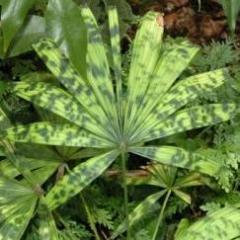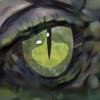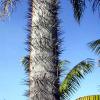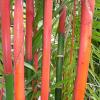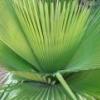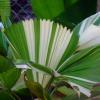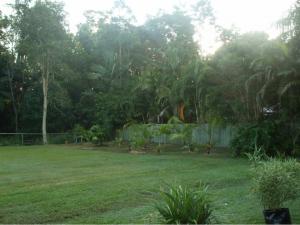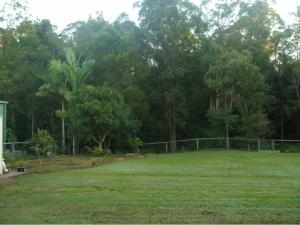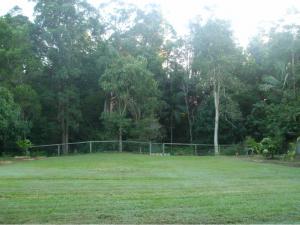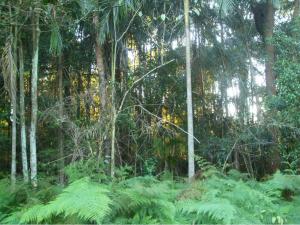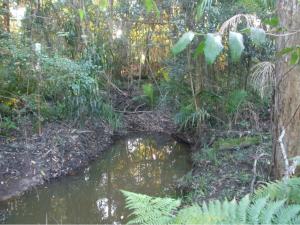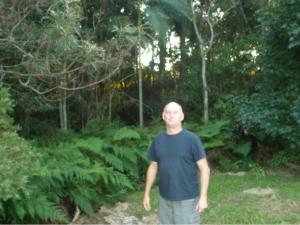Leaderboard
Popular Content
Showing content with the highest reputation on 04/07/2010 in all areas
-
Now that my whole family is on PalmTalk, that brings me to the topic of family. I'm pretty sure all of them will have more posts than what I have pretty soon. So many of us are away from our immediate family. Here in Hawaii, you end up with what we call Ohana, extended family. I now have Ohana Sisters. I've extended that to some of you on Palm Talk also. You know who you are . Today is my father's birthday. He was born in 1900, therefore, today he's 110. He is not here in the flesh. Bo-Göran keeps telling me not to write or say he's 110 because he is no longer with us. Well I do not agree with him. I love stating it this way, even though he is not here in the flesh. He died very early. That was in 1956. I'll never forget his birthday or any other family member's birthday. Do you remember those types of things? Thank you for this forum, making it possible for me to express this here today. Just remember, family is so very important! I'm the youngest of eleven children and only two of us are left. Anyone out there have family on PalmTalk or do you have very fond memories of family members not in the flesh? I feel we must keep their spirits alive. Make it a great day. Happy Birthday DADDY!1 point
-
Lol I took a break to go get some dinner, food powers the memory and the fingers. The photo came out darker than I had wanted, but there are green stripes on the culms and that is considered to be a small to moderate clump of bamboo here in South Florida. I have had containerized Timor Black Bamboo that have sent up culms without green stripes, as they emerge green and fade to very dark purple, sometimes completely and missing the stripes. I have heard from a veteran Bamboo grower I know from a nearby garden club, Mike Kellum that the better way of telling them apart is from the emergent shoots. Gigantochloa is very close to Bambusa and will probably be lumped into Bambusa in the near future. Ryan1 point
-
- 10:10AM: Here they come... The small walkway between the plants and the house quickly filled with people as the tour moved into the Conservatory. - Every collection has to have a Pelagodoxa henryana, of any size. This specimen was of good size and was not far away from producing trunk. The benefit of the enclosure, and its wind protection, would mean this palm would keep its iconic undivided leaves for much longer than normal. - I had to get one Croton in the topic somewhere or I would hear about it later. This is 'Tortoise Shell' Croton, Codiaeum variegatum cv. 'Tortoise Shell'. - 10:11AM: "Oh, how nice... Oooh look at that one." The wow factor stayed up into the high levels as people continued to "Ooh" and "Ahh" and point out everything they liked. Ryan1 point
-
- 10:08AM: I worked my way over to the western end of the Conservatory and noticed a few more shadehouses outside filled with all sorts of containerized plants. This large pot held a plant I had recently become familiar with, this is the Nun's Orchid, Phaius tankervilliae and it was just starting its blooming cycle. - A closeup of one of the newly opened flowers. Individual flowers range in color slightly from bloom to bloom, this one had the darker, burgundy hue. - 10:09AM: "What is that?" I said this to myself, out loud, as I got close to this unusual Rhapis clump. I went and found Jeff Block and asked him what it was and he said "Rhapis multifida", but it does not look like one, the leaves are too small and had much smaller, tiny inflorescences. It seems to have a bit of Rhapis gracilis in it, so it could be a hybrid between the two species... Whatever it is, it looked quite unique and would not have minded a small division... - 10:10AM: A garden sign stood out in front of this densely spotted Angel wing Begonia cultivar. They are hard to see, but it was bearing white flowers near the center of the plant. Ryan1 point
-
- 10:07AM: I returned to the Itaya amicorum to get some more shots, as it was looking so good and this species happens to be one of my long time favorites. I asked Ron to get in this image as I was afraid the other photos didn't fully represent the size of those large leaves. - 10:08AM: The unused airspace was not wasted, as several bromeliad and orchid clusters were mounted from the cross beams. - The center of the Conservatory was dominated by another large, Giant Tree Fern, Angeropterix sp. This one will take up a lot of space as is grows even larger. - The crowd slowly moved in through the door, as I looked for hidden surprises. Ryan1 point
-
- 10:05AM: Ron Kiefert and I were the first ones in here, but sight of us walking around in addition to natural curiosity drew others inside. In addition to palms and epiphytes, the Conservatory featured Begonias, Ginger relatives, and one-of-a-kind tropical exotics. - Sporting some serious stilt roots, this sparse clump of Areca vestiaria var. 'Maroon Leaf' was scraping the shade cloth up above. Ron noticed how it was either pruned of suckers or wasn't growing any new ones. It had survived the cold with light damage, but should quickly recover. - 10:06AM: Some plants were really stuck in close together, and it was difficult to photograph them individually. The rainforest look for sure. Those stripped petioles belong to a Zebra Fishtail Palm, Caryota zebrina. The two-colored, heavy ground cover to the right is Brazilian Snow, Ctenanthe lubbersiana. - The tour was slowly reaching the Conservatory, as I could hear everyone outside getting closer. Ryan1 point
-
- 10:04AM: Those elegant, deeply-divided fan leaves can grab anyone's attention with ease. The bright white leaf undersides are just a bonus. This is a well grown Itaya amicorum, also known as the Miraña Palm and enthusiasts often refer to it as the "Licuala of the New World". - The back section of the Conservatory was fortified by a solid, coral rock wall that extended half way up the height of the structure. It was covered with a plethora of epiphytes, including ferns and aroids. - This palm needs little introduction, except for maybe the species epithet. I didn't even have to ask Ron to get next to this Silver Joey, Johannesteijsmannia magnifica, he was already in that spot, admiring the leaves. Those diamond leaves will eventually consume this entire spot. - 10:05AM: The center of the Conservatory featured a small pond, fed by a nearby waterfall in behind and was surrounded by a wrought-iron railing. Trying to absorb everything so fast was getting exhaustive. Again, I have to note the weather was flawless, in addition to the clear skies the air temperature was cool with low humidity, perfect for a tour. Ryan1 point
-
- 10:00AM: The palms planted around the pool I had seen earlier, but this moment allowed me to capture them with awe inspired tour goers. - 10:01AM: When I wasn't peeking inside the Conservatory, I kept my camera pointed at the crowd. I was doing my best not to fall in the pool, when I shot across it to catch a batch of Forum members in the center, Ron Kiefert (moose knuckle), Randy Wiesner (palmisland) and of course, Jeff Searle. I think Jeff thought I was photographing just him. - 10:02AM: Jeff Block [center, w/ back to pool] continued to guide people around his yard, and calling out possible obstructions including those stairs. They were invisible when seen from the far side, and I expected to see someone trip over them into the pool, but it didn't happen. Shucks. The tour pace was getting interminable, and I didn't want to wait anymore, so I grabbed the door handle and sneaked into the Conservatory... - 10:03AM: It was like stepping into a whole new yard, while surrounded by another. I took some rapid area shots without the crowd at first, then proceeded to explore every nook and cranny. The entire structure was like a standard pool enclosure, (the pools original location was here) covered with heavy shade cloth. It was the length of the entire house, with a decent width and aforementioned height. Jeff had mentioned the other Red Sealing Wax Palm, Cyrtostachys renda, on the right during his introduction at the gate. He spoke of how certain rainforest species excelled out in full sun but seemed to struggle in the Conservatory, with irony. In the extreme right of the image, a tall Chamaedorea metallica var. 'Pinnate' took up residence. Ryan1 point
-
- 9:57AM: When I saw this palm for the first time, I thought I knew what it was, but when I went in for a closer look I was not sure. I asked Jeff Searle and a few others about it but only got more doubt in return. I first thought it might be a Nannorrhops ritchieana, but it was flowering already, with familiar and different inflorescences. Has it started to fry your brain yet...? This is the Hobe Sound variety of the Silver Saw Palmetto, Serenoa repens var. 'Hobe Sound'. This was one ID that Jeff Block was sure about. - 9:58AM: This was all that was left after they got done preparing lunch. - 9:59AM: This large Oak Tree sat at the edge of the patio and has done its fair share of storm survival over the years, one characteristic this native is known for. It has since become host for numerous orchids and several hanging bunches of Spanish Moss, Tillandsia usneoides. - 10:00AM: I was slowing edging my way to the Conservatory as I wanted to be the first inside. While looking inside through the exterior door, I took photos simultaneously including one of this Red Form, Alcantarea imperialis cv. rubra. Ryan1 point
-
- 9:55AM: The Silk Floss Tree went up and up... It's vertical growth habit and lack of grafting mark suggested this was a regular species C. speciosa grown from seed and not a grafted cultivar. Without being grafted, it may take decades to flower, which is how old this tree seemed to be... It had started to flush out again for the spring. - 9:56AM: The Bamboo subfamily was well represented in the garden, with several large clumps mixed in the landscape where they could fit. There were a few dwarf Bamboo species or cultivars that I did not recognize. This is a large clumb of Timor Black Bamboo, Bambusa lako which was fighting for space with a nearby Lady Palm strand, Rhapis excelsa. - The tour reached the pool patio that I had impulsively ran off to photograph earlier. This marked the three-quarter mark in the tour 'loop'. - Jeff Block was in the center of that mass, giving a short speech or description about something, I could not make it out from this distance; plus I was too busy taking shots of everything. I still don't know what that red sculpture on the right was for, but I was sure it was expensive. What ever it did, it was doing it now. Ryan1 point
-
- 9:54AM: There was a surplus of plant knowledge in the tour today. There were palm growers, collectors and enthusiasts mixed in with collectors and growers of other plant groups. When an identification was called for, there was at least two or three people to ask, depending on the plant family. We were heading for that strange red metal art sculpture on the patio, as it seemed a better 'tour bookmark' than anything else. - 9:55AM: As we were walking back, we got a showing of everything planted on the north side of the planting bed, namely this Calyptronoma rivalis... - ... and this giant Sugar Palm, Arenga pinnata. - "Oooh, that's spiny." The curious get a closer feel of the bulbous and spine-covered trunk of the Silk Floss Tree, Ceiba speciosa. The flowering shrub on the left is a Golden Shrimp Plant, Pachystachys lutea, a popular landscape plant in South Florida. Ryan1 point
-
Thanks, Len I think you solved the mystery. I checked Whitelock's cycad book again and the photo and description are very close to the specimen in the photo. I will put the name with this image for now. I never expect to see a Cycas sp. in many collections any more due to the Asian Snow Scale Aulacaspis yasumatsui. There have been a few success stories involving tolerant species, but not that many to make Cycas popular again. Ryan1 point
-
Halleluiah, you said a mouthful Ari the land where I live was an old sugar cane farm,and the soil was stuffed the areas I have mulched for many years can grow almost anything, the areas that I have not mulched tend to kill anything I try to plant there mulch is king1 point
-
Hey.... my name has been mentioned... so I have to reply. I don't know about other people's experience... but my place is an ex-market garden (mainly vegies) so the previous owner plants in rows. I can see some parts has very good top soil and some has very poor soil!! I have been mulching for the last 3-4 years now, and I can see the difference it makes to the soil. In the first 2 years, my plants planted in the poor soil, has performed very poorly. After mulching heavily for 3-4 years, it has improved so much, and my plants start to grow well. I don't know about Hawaii, but in Darwin, if I don't mulch, the soil will be very dry in the dry season. Hence, the plants will suffer, especially the ultra tropical stuff like iguanura, calyptrocalyx, pinanga, licuala, etc. I don't water everyday, even in the dry... because I mulch. And yes... our dry season is very dry and long!! In the wet, if I don't mulch, the garden beds will be overrun by weeds. They grow much faster than anything I planted. I will have 3m grass growing in my garden in 2 weeks (not joking!!). So, mulch serves a lot of benefits for me... Yes, it is expensive as I use 300 bales of hay last wet and time consuming as we just finished our garden a few months ago, and just about to do it again in a month time... but I can see some worm activity in my soil now, the soil also stays moist and full of organics. I don't know about you.... but I do check the condition of my soil all the time and I never see any downside of mulching. As a nursery man once told me "Don't feed your plants, feed your soil" Regards, Ari1 point
-
- 9:52AM: I wasn't sure when I would be back here again, so I took multiple photos. Here is a tighter view of the Talipot Palm's massive crown. - The tour, continuing to be led by the hard working Jeff Block, headed back to the patio via short excursions into the bush by the plant hungry. The north side was fairly sunny at this time of the year, due to the deciduous nature of that humongous Silk Floss Tree, Ceiba speciosa, on the right. - 9:53AM: A minute later, I was called over by Jeff Searle as he noticed another palm that deserved a bit more attention. In the center planting bed, almost obscured by a light fixture, grew a mature-sized Reinhardtia gracilis, also known as the Window Pane Palm. - 9:54AM: Back along the turf path, the effects of stretching could be seen on this Cuban Belly Palm, Acrocomia crispa (Gastrococos crispa). It seemed to almost be sacrificing its 'belly' to gain height to reach full sun. Ryan1 point
-
- 9:50AM: I kept darting back and forth as photo worthy situations kept popping up in front of me. [shutter click] I stood at the SE corner of the yard and looked all the way back to the house and noticed a few of the taller palms we walked past earlier, a tall Bismarck Palm, Bismarckia nobilis on the left, and a Coconut Palm, Cocos nucifera, on the right. As you can see, there was not a cloud in the sky. - I heard Ron call out he found something, so I spun around 180º to see him crouching next to a very rare Ae-Ae Banana, Musa paradisiaca cv. "Ae-Ae". There was a larger specimen planted up near the gate, but it was still coming out of cold damage. - 9:51AM: A robust Bismarckia Palm anchored the end of the planting bed and it was hard to ignore as we rounded the corner and headed back towards the house. - 9:52AM: The Talipot Palm, Corypha umbraculifera, begged to get climbed on. There is just something about large leaf bases that are the same size as you. Ryan1 point
-
I recently killed 3 RPW. Very slow moving thanks to the cooler weather. Last May I caught 14 of them on a Washingtonia. This is definitely the time to be vigilant!1 point
-
I believe they're native to the mountains of China... and that's way they prefer cooler climates. But I think you did well to locate it on a slope, because as long as the root ball doesn't stand in water they can adapt to most any climate just fine. I was instructed to water mine when the soil was dry at about 2" down until it was established. The roots should be kept moist, but not soaking wet constantly. They don't tolerate high winds very well and they seem to maintain a deeper shade of green when they're not in direct sunlight all day. Mine is in direct sun, but I didn't have a lot of choices unless I wanted to hide it in the back yard. Good luck with it and keep us posted! - Randy1 point
-
Hi folks, I recall MattyB posting a thread calling for ideas on a name for his place, which he ended up naming "Manambe Lavaka" as we all know. I'd like here to do the same. So please let me hear some naming ideas, I already have some thrown at me by some family, those ideas being: Spring Creek palms Bos i Coill (Gaelic meaning "palms in the forest") Some clues are that my place does have a bush at the back with a small mountain creek, there are native bangalows growing in that bush or forest or whatever you'd like to call it. I've planted a storm of palms already along the sides. Here's some pics for a guide. Bring it on, anything and everything will be considered even if it simply triggers an idea by myself, that helps, thanks.1 point
-
1 point
-
Xbutyagrus nabonnandii (pic 1&2) was the mother of this baby in picture 3. So how can this one be called a mule? I have also used pollen from this Xbutyagrus to a Butia and have 2 offspring from it. So the mother is a Xbutyagrus nabonnandii but do not call it a mule.1 point
-
1 point

